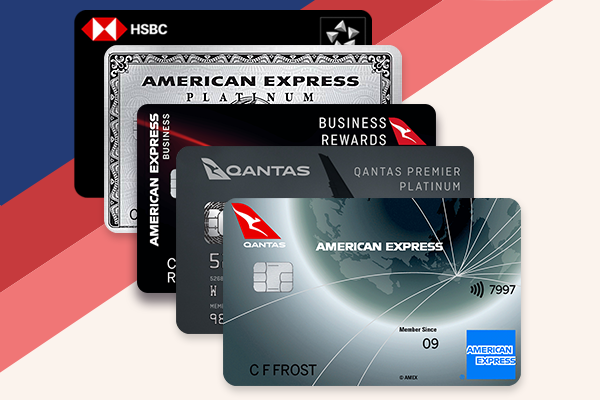You are using an out of date browser. It may not display this or other websites correctly.
You should upgrade or use an alternative browser.
You should upgrade or use an alternative browser.
Europe, with an Arctic cruise, a Balkan tour and bits of France and Malta
- Thread starter RooFlyer
- Start date
- Joined
- Nov 12, 2012
- Posts
- 31,134
- Qantas
- Platinum
- Virgin
- Platinum
- Star Alliance
- Gold
As foreshadowed by you, stunning! The lakes are absolutely amazing. Does the driving with hairpins etc induce motion sickness? Asking for a friend.
I am subject to motion sickness but didn’t feel anything and I didn’t hear of anyone else in the bus either.
We did pass and were passed by a lot of motorcycles. There was a statistic quoted that Montenegro is the worlds ????? third most popular destination for motorcycling.
Essentially, all we’ve done is drive through Montenegro. I imagine if you want to really delve into it for say 3 to 5 days it’ll be even more amazing.
- Joined
- Nov 12, 2012
- Posts
- 31,134
- Qantas
- Platinum
- Virgin
- Platinum
- Star Alliance
- Gold
Hotel in Sarajevo is Hotel Diamond Rain. Maybe something gets lost in translation. Nice little hotel; mine is a mansard room, the bed is comfy, the bathroom good and the aircon works well, and quietly!
Its a 5-10 min walk up a hill from the river and the beginning of the old town. Too narrow for our bus to get to, so they transferred our bags in to a another vehicle while we walked up, and the bags were waiting when we got there.
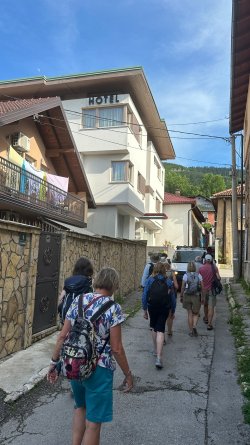
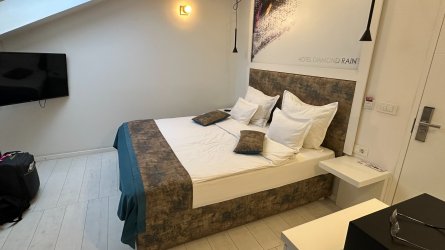
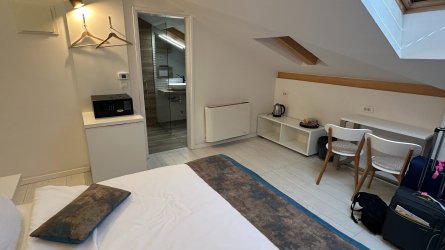
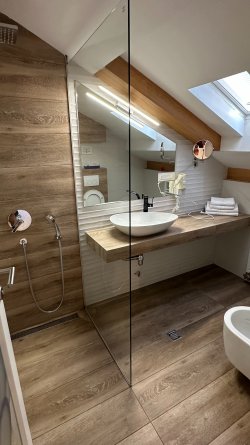
We choofed off to a walking tour, led by a local guide. After crossing the Miljaka river (slow moving ATM),
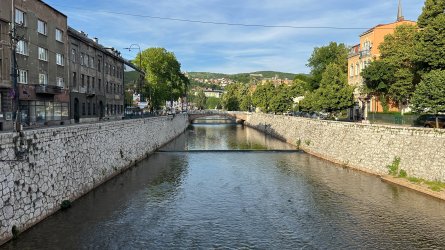
first stop was the point where Archduke Franz Ferdinand of Austria was assassinated by Bosnian Serb Gavrilo Princep as the archduke was parading through the streets of Sarajevo in an open car. The Austro-Hungarians were colonial occupiers of the Balkans, having tipped out the Ottomans

 en.wikipedia.org
en.wikipedia.org
... which was the trigger for WW1. The Austro-Hungarians attacked Serbia, the Russians came to support Serbia, the Germans joined the Austrians and the Germans then attacked France.
This is where it happened. There are 2 footsteps (Princep's) in the pavement under the image at the corner of the left side.
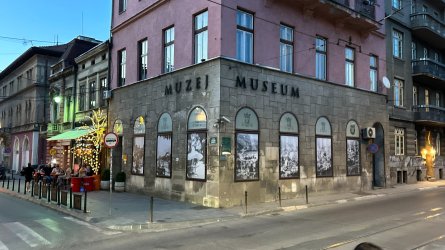
Taken seconds before
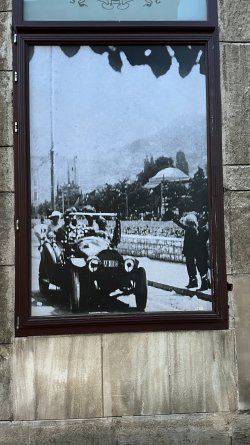
There were 4-5 assassins. Earlier in the parade, one of them lobbed a grenade at the car, and this was fended off by the Archduke, then exploded. After regrouping, confident that the danger was passed, the parage continued and Princep killed the Archduke and his wife (likely by mistake) a few minutes later.
I had read Assassin by Tim Butcher and it was great prep for understanding a lot of Bosnia's history, not just the assassination.

 www.theguardian.com
www.theguardian.com
Its a 5-10 min walk up a hill from the river and the beginning of the old town. Too narrow for our bus to get to, so they transferred our bags in to a another vehicle while we walked up, and the bags were waiting when we got there.




We choofed off to a walking tour, led by a local guide. After crossing the Miljaka river (slow moving ATM),

first stop was the point where Archduke Franz Ferdinand of Austria was assassinated by Bosnian Serb Gavrilo Princep as the archduke was parading through the streets of Sarajevo in an open car. The Austro-Hungarians were colonial occupiers of the Balkans, having tipped out the Ottomans

Assassination of Archduke Franz Ferdinand - Wikipedia
... which was the trigger for WW1. The Austro-Hungarians attacked Serbia, the Russians came to support Serbia, the Germans joined the Austrians and the Germans then attacked France.
This is where it happened. There are 2 footsteps (Princep's) in the pavement under the image at the corner of the left side.

Taken seconds before

There were 4-5 assassins. Earlier in the parade, one of them lobbed a grenade at the car, and this was fended off by the Archduke, then exploded. After regrouping, confident that the danger was passed, the parage continued and Princep killed the Archduke and his wife (likely by mistake) a few minutes later.
I had read Assassin by Tim Butcher and it was great prep for understanding a lot of Bosnia's history, not just the assassination.

The Trigger: Hunting the Assassin Who Brought the World to War – review
Tim Butcher brings his own experience of Yugoslavian conflict to bear on this revelatory portrait of Archduke Franz Ferdinand's assassin, Gavrilo Princip , writes Christopher Clark
- Joined
- Sep 20, 2018
- Posts
- 4,530
- Qantas
- Platinum
Ever the educator @RooFlyer - had to look that one up, but will now add it to my vocabulary.mansard room
I stayed in a mansard room at Mercure Munich - twice!
I just found some more pictures of the lake and river on the way to Sarajevo
View attachment 448762
View attachment 448763
View attachment 448764
View attachment 448765
View attachment 448766
View attachment 448767
View attachment 448768
Going over the dam
View attachment 448769
Stunning
I too reminisce fondly of those days!Spectacular country like that best enjoyed on two wheels.. sadly I am past it but thats life...
. Then
. Now
. The future
- Joined
- Nov 12, 2012
- Posts
- 31,134
- Qantas
- Platinum
- Virgin
- Platinum
- Star Alliance
- Gold
OK, a bit behind in the TR, so spoiler alert.Stunning. You’re really whetting my appetite for our trip which starts next Tuesday.
Lukomir



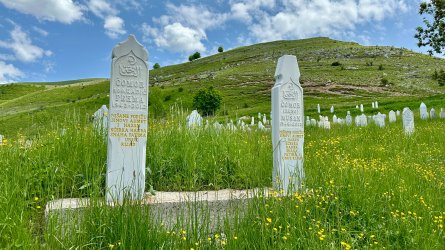
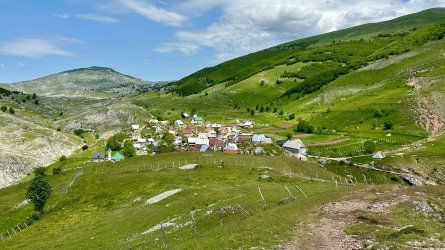
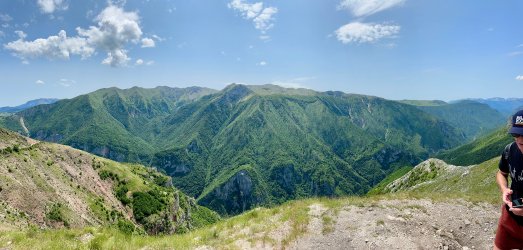
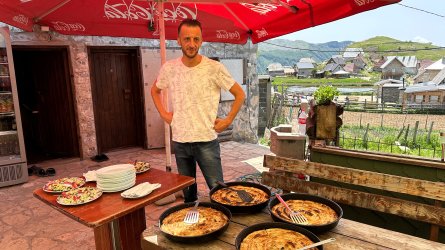
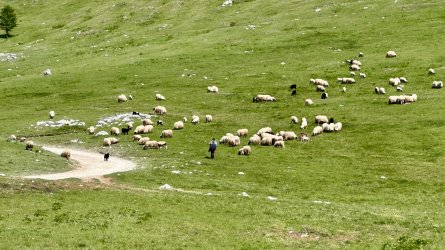
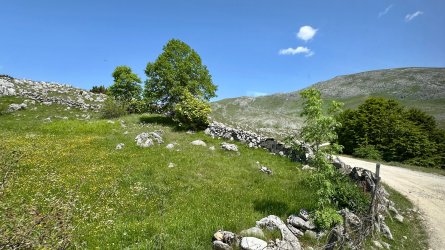
- Joined
- Nov 12, 2012
- Posts
- 31,134
- Qantas
- Platinum
- Virgin
- Platinum
- Star Alliance
- Gold
Back to Sarajevo. The walking tour was interesting, but I wasn't terribly impressed with the Old Town (this would change).
Much of the Old Town was destroyed in the 1990s war, so what we see has been re-built and not always charmingly. There is an 'Ottoman half' and an 'Austro-Hungarian half', quite distinctive and easily recognised as reflecting their respective histories.
Almost all of the Ottoman area has the narrow pedestrianised streets lined with cafes, restaurants and other shops. Mainly deserted in this morning - I'll come back to them later.
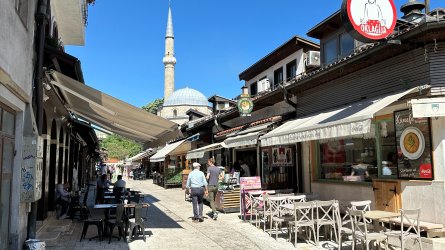
Lots of Turkish-style sweets shops.
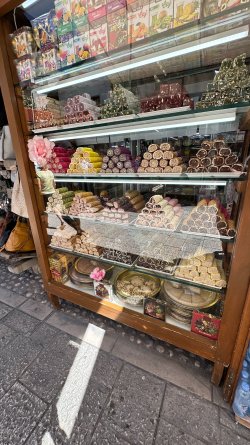
LOTs of mosques. We didn't go inside any. Islam here is practiced in a pretty relaxed way. Some ladies in hijabs, many (?most) in 'western' dress, including some rather brief attire. We were told if we saw any ladies with face coverings, they would be tourists.
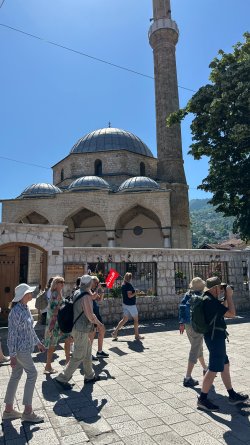
Coppersmith, with some dodgy souvenirs. Its hard not to see remnants of the war everywhere here.

A 'pie shop' - pies are called böreks and again, I'll come back to them
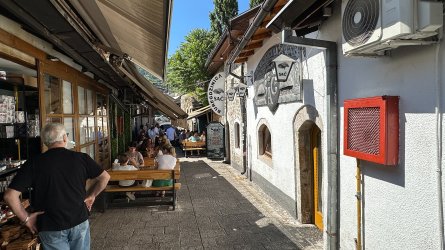
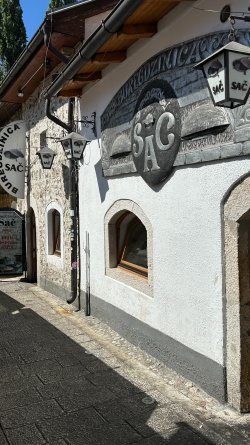
Ruins of an old Ottoman caravanserai. We visited one still extant, but I can't find the pics.
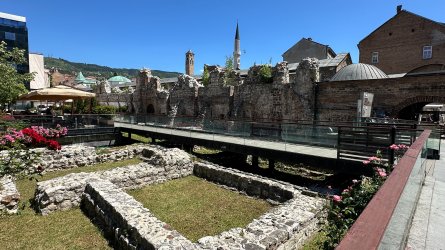
Town Hall
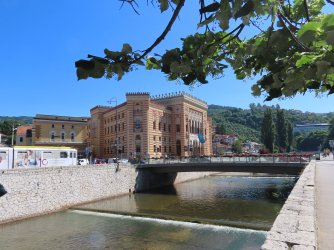
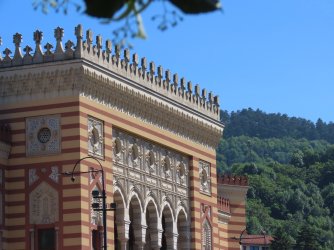
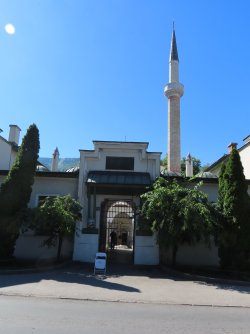
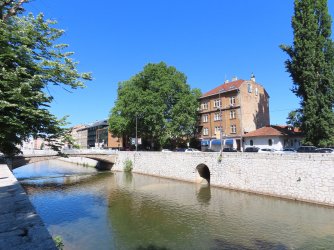
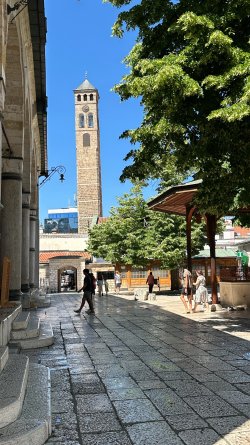
Much of the Old Town was destroyed in the 1990s war, so what we see has been re-built and not always charmingly. There is an 'Ottoman half' and an 'Austro-Hungarian half', quite distinctive and easily recognised as reflecting their respective histories.
Almost all of the Ottoman area has the narrow pedestrianised streets lined with cafes, restaurants and other shops. Mainly deserted in this morning - I'll come back to them later.

Lots of Turkish-style sweets shops.

LOTs of mosques. We didn't go inside any. Islam here is practiced in a pretty relaxed way. Some ladies in hijabs, many (?most) in 'western' dress, including some rather brief attire. We were told if we saw any ladies with face coverings, they would be tourists.

Coppersmith, with some dodgy souvenirs. Its hard not to see remnants of the war everywhere here.

A 'pie shop' - pies are called böreks and again, I'll come back to them


Ruins of an old Ottoman caravanserai. We visited one still extant, but I can't find the pics.

Town Hall





Read our AFF credit card guides and start earning more points now.
AFF Supporters can remove this and all advertisements
- Joined
- Nov 12, 2012
- Posts
- 31,134
- Qantas
- Platinum
- Virgin
- Platinum
- Star Alliance
- Gold
As you cross over to the Austro-Hungarian part, there is this cute sign; when contemplating where to have dinner, you spin the wheel and it tells you 'east or west'.
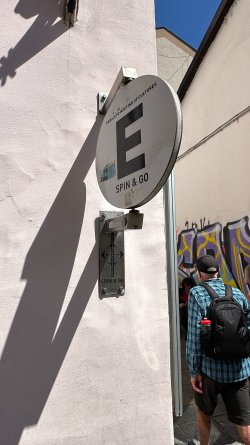
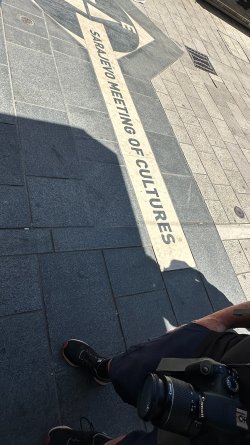
Sarajevo seems a very tolerant, well integrated city (Bosnian Serbs perhaps excepted). During WW2, the old texts and manuscripts from the Synagogue were taken into the hills and stored in a mosque.
Many. many buildings exhibited bullet or shrapnel holes. More on the Siege of Sarajevo later.
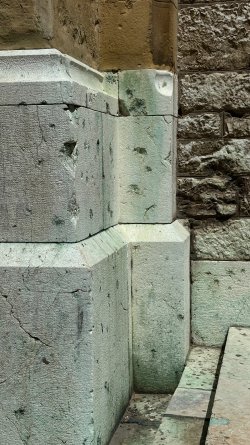
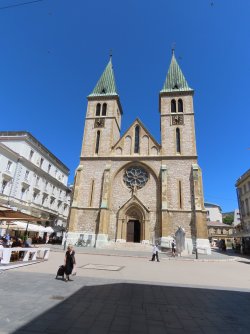
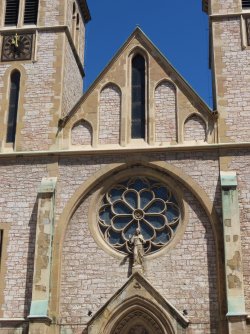
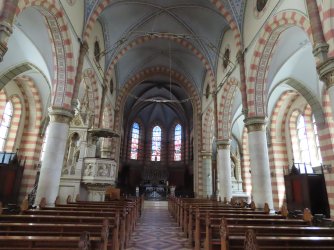

Pope JP2 visited
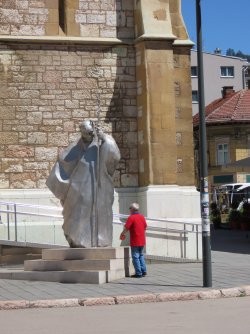
Cafe scene in the Austro-Hungarian part.
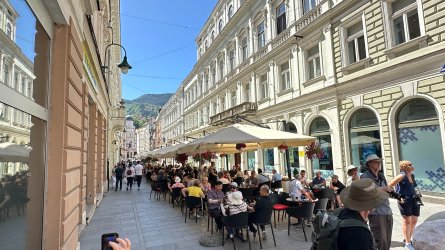


Sarajevo seems a very tolerant, well integrated city (Bosnian Serbs perhaps excepted). During WW2, the old texts and manuscripts from the Synagogue were taken into the hills and stored in a mosque.
Many. many buildings exhibited bullet or shrapnel holes. More on the Siege of Sarajevo later.





Pope JP2 visited

Cafe scene in the Austro-Hungarian part.

- Joined
- Nov 12, 2012
- Posts
- 31,134
- Qantas
- Platinum
- Virgin
- Platinum
- Star Alliance
- Gold
Sarajevo Tunnel Museum
I'm probably assuming a fair bit of knowledge of readers about the Bosnian War of the 1990s (I've learned a hellavalot on the tour), so please taker some time out to read about it here - you'll see how the Republika Srpska came about

 en.wikipedia.org
en.wikipedia.org
In the course of the war, Bosnian Serbs lay seige to Sarajevo; again, worth a read:

 en.wikipedia.org
en.wikipedia.org
The longest siege of a city since Leningrad in WW2. I mentioned the mountains and hills around the city - these were occupied by the Serbs, who didn't have sufficient manpower to invade the city, so they rained down artillery and sniper fore for years. A total of 13,952 people were killed during the siege, including 5,434 civilians. Many were killed by sniper fire - including hundreds of children. Sniper fire.
This diagram shows the positions. The city was surrounded except on one area and between that and the city was the airport, controlled by the UN (white scratched area in the 'neck' below). Free Bosnians could not cross across the airport to escape - they were turned back by the UN. Notwithstanding the city was literally starving. Some made it - it was like escaping over the Berlin Wall (with the UN in the fire towers).

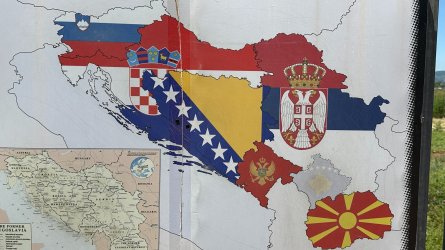
So, the Bosnians built a tunnel under the airport from the city side to the 'Free Bosnian' side. UN didn't know, Serbs didn't know - it was still secret for a few years after the war, we were told.
One one side the entrance of the tuinnel was beneath a house 'donated' by a family; on the other side it was an apartment black. It allowed food and supplies to cross into the besieged city, saving many lives.
One side is now a museum.
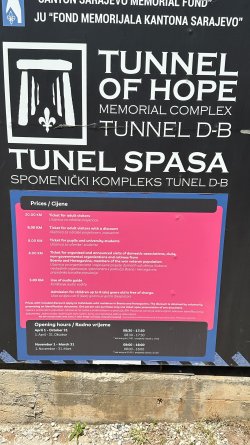
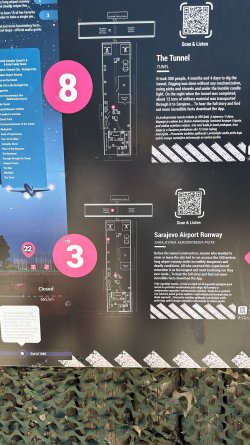
Entrance to the house and then the tunnel beneath it.
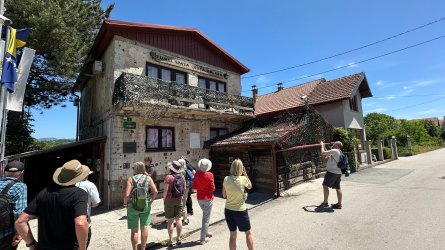
The airport today from the house.

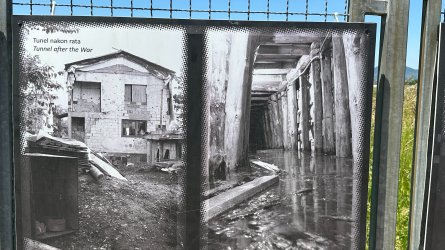
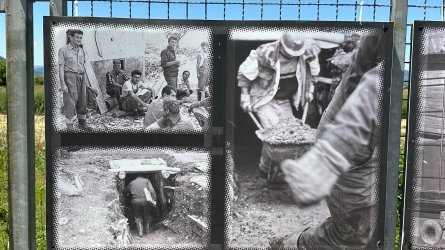
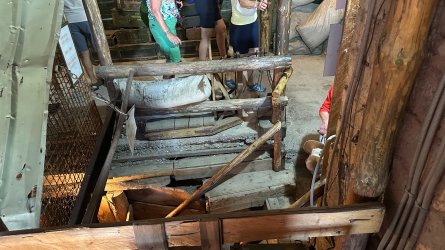
The actual tunnel is being renovated, so there is a 'model' that you can walk through.
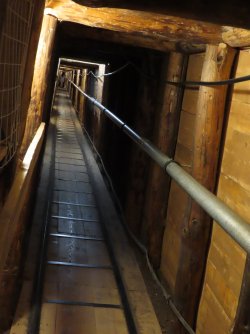
Workers on the tunnel
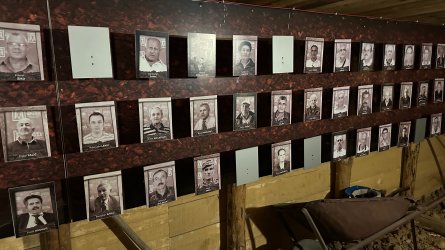
I'm probably assuming a fair bit of knowledge of readers about the Bosnian War of the 1990s (I've learned a hellavalot on the tour), so please taker some time out to read about it here - you'll see how the Republika Srpska came about
Bosnian War - Wikipedia
In the course of the war, Bosnian Serbs lay seige to Sarajevo; again, worth a read:

Siege of Sarajevo - Wikipedia
The longest siege of a city since Leningrad in WW2. I mentioned the mountains and hills around the city - these were occupied by the Serbs, who didn't have sufficient manpower to invade the city, so they rained down artillery and sniper fore for years. A total of 13,952 people were killed during the siege, including 5,434 civilians. Many were killed by sniper fire - including hundreds of children. Sniper fire.
This diagram shows the positions. The city was surrounded except on one area and between that and the city was the airport, controlled by the UN (white scratched area in the 'neck' below). Free Bosnians could not cross across the airport to escape - they were turned back by the UN. Notwithstanding the city was literally starving. Some made it - it was like escaping over the Berlin Wall (with the UN in the fire towers).


So, the Bosnians built a tunnel under the airport from the city side to the 'Free Bosnian' side. UN didn't know, Serbs didn't know - it was still secret for a few years after the war, we were told.
One one side the entrance of the tuinnel was beneath a house 'donated' by a family; on the other side it was an apartment black. It allowed food and supplies to cross into the besieged city, saving many lives.
One side is now a museum.


Entrance to the house and then the tunnel beneath it.

The airport today from the house.




The actual tunnel is being renovated, so there is a 'model' that you can walk through.

Workers on the tunnel

- Joined
- Nov 12, 2012
- Posts
- 31,134
- Qantas
- Platinum
- Virgin
- Platinum
- Star Alliance
- Gold
After that, there was lunch and then free time for the rest of the day. I went up the Cable car to the Olympic bobsled track.
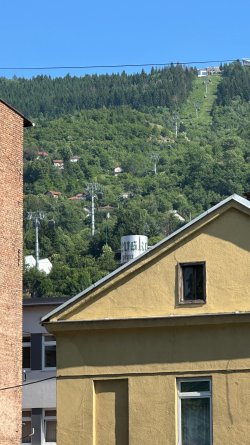
Magnificent view. But now imagine the Bosnian Serbs firing artillery from here.

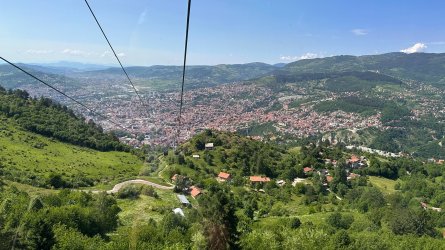
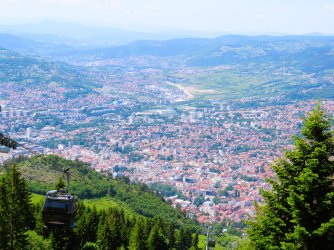
The little platform on the mid left is the 'Yellow Fortress. More on it and the other building later.

View behind the top of the cable car station.
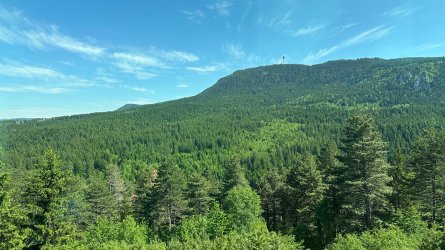
Cafe at the top. Iced coffee and fresh squeezed OJ on a 28 degree day.
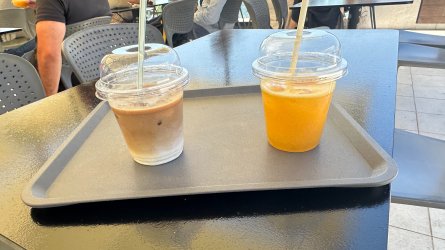
Admiring the view
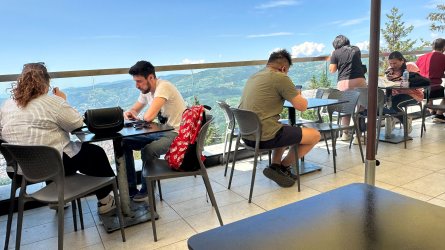

Magnificent view. But now imagine the Bosnian Serbs firing artillery from here.



The little platform on the mid left is the 'Yellow Fortress. More on it and the other building later.

View behind the top of the cable car station.

Cafe at the top. Iced coffee and fresh squeezed OJ on a 28 degree day.

Admiring the view

Last edited:
- Joined
- Nov 12, 2012
- Posts
- 31,134
- Qantas
- Platinum
- Virgin
- Platinum
- Star Alliance
- Gold
I then went into town to have an early dinner. Had to try a Bosnian Pie or Burek. Layers of filo pastry, filled with meat or cheese or spinach & fetta or vegetables, spiralled round in a 'snail'.
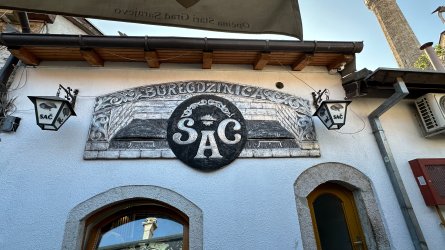
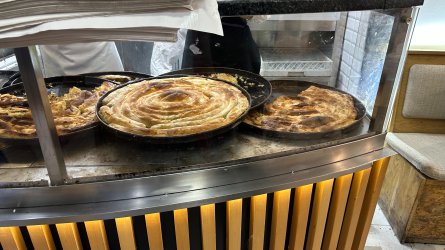
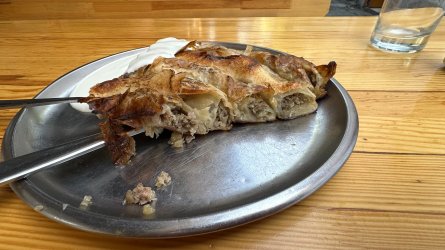
Usually served with yoghurt. I think this with the orange drink was A$5
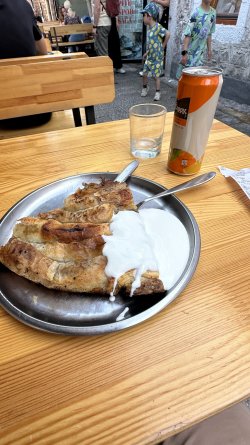
It wasn't very good - lots of gristle (tourists serve) - I had a great one the next day.



Usually served with yoghurt. I think this with the orange drink was A$5

It wasn't very good - lots of gristle (tourists serve) - I had a great one the next day.
Last edited:
- Joined
- Nov 12, 2012
- Posts
- 31,134
- Qantas
- Platinum
- Virgin
- Platinum
- Star Alliance
- Gold
The next day was for me, and some others, the best day of the trip so far, and a perfect example of the benefits of a group tour. (That said, at the end I'll be saying how Montenegro and B and H (oops - remember those?) are easily done independently.)
We went to Lukomir, the highest (1,469m) and one of the most isolated villages in B and H. Why the best day and good example of group tour? Spectacular (to say the least), unexpected, difficult to get to, expert driver on bad dirt roads, great 'insider' catering.
The route; 1hr 38 mins would be for a car, damaged at the end.
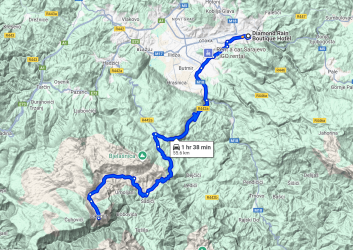
First stop was Bjelasnica town, to the right of the Bjelasnica mountain symbol in the map above. Bjelasnica mountain is 2,062 m and was developed as ski fields and other activities for the 1984 Winter Olympic Games.
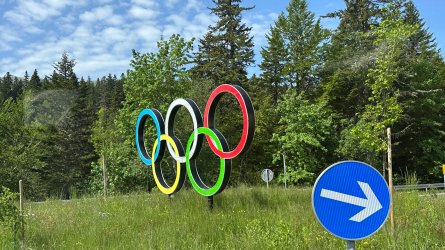
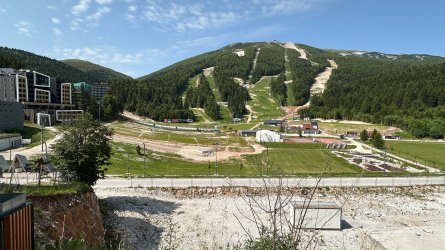
Like Zabljak, it is undergoing a building boom for skiers.
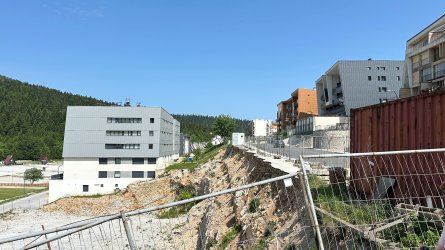
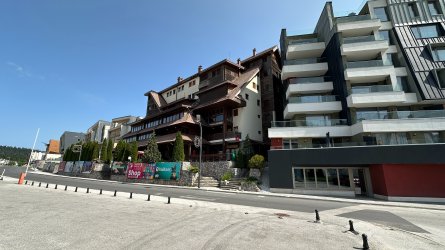
We were told that EVERY ONE of the dozens and dozens of lodge type hotels we saw - except one - were built corruptly (planning process). This was the legal exception - now derelict.
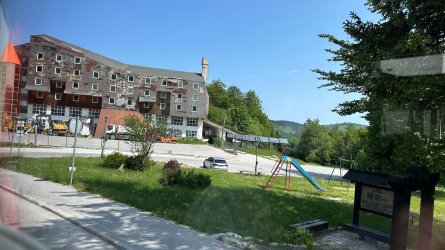
I think the Aussie geckos are better
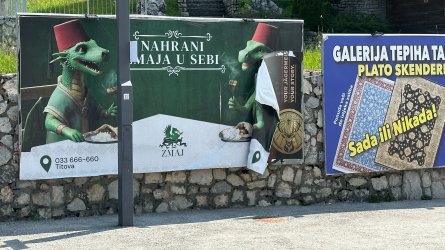
My new wallpaper
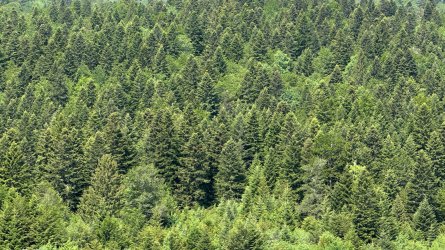
We went to Lukomir, the highest (1,469m) and one of the most isolated villages in B and H. Why the best day and good example of group tour? Spectacular (to say the least), unexpected, difficult to get to, expert driver on bad dirt roads, great 'insider' catering.
The route; 1hr 38 mins would be for a car, damaged at the end.

First stop was Bjelasnica town, to the right of the Bjelasnica mountain symbol in the map above. Bjelasnica mountain is 2,062 m and was developed as ski fields and other activities for the 1984 Winter Olympic Games.


Like Zabljak, it is undergoing a building boom for skiers.


We were told that EVERY ONE of the dozens and dozens of lodge type hotels we saw - except one - were built corruptly (planning process). This was the legal exception - now derelict.

I think the Aussie geckos are better

My new wallpaper

- Joined
- Nov 12, 2012
- Posts
- 31,134
- Qantas
- Platinum
- Virgin
- Platinum
- Star Alliance
- Gold
Past the ski village, the road narrowed to the usual almost-single-lane, winding road, with motor-cyclists the main oncoming traffic. But the country was simply beautiful. If we were in a car, I would have been stopping constantly as each view surpassed the last, but these just taking by pressing the iPhone against the bus window.
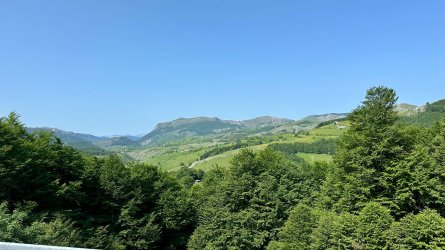
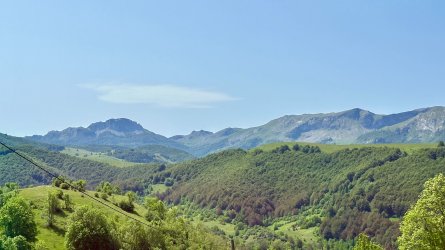
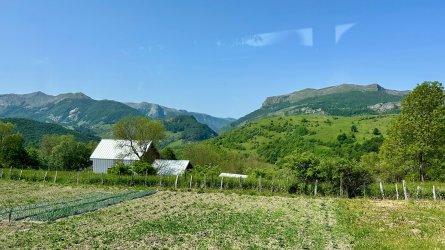
An hour after the ski lodges, the road turned to true single lane, rough dirt.
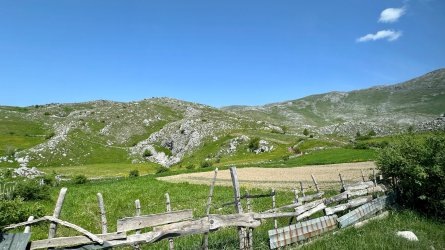
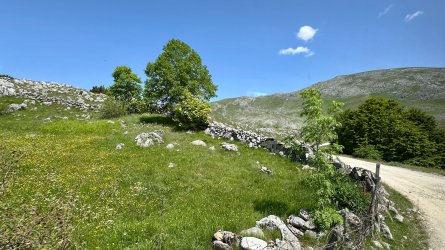



An hour after the ski lodges, the road turned to true single lane, rough dirt.


- Joined
- Nov 12, 2012
- Posts
- 31,134
- Qantas
- Platinum
- Virgin
- Platinum
- Star Alliance
- Gold
The (seemingly) long and (definitely) winding road. There was only about 12km of dirt, but it was very slow going. Must have been very trying for the driver. Today, we are on a different bus, an older one, so the newer coach we usually had wasn't damaged by the road! Different driver too.
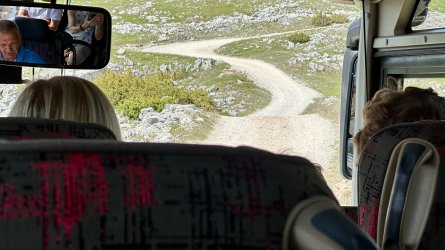
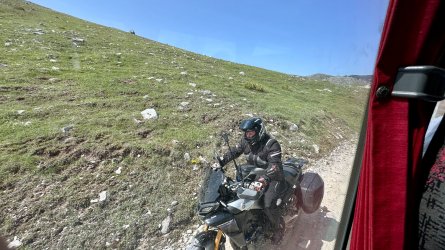
Sheep and cattle are run out here, and ancient stone-walled pens dotted the countryside. By this time we were quite high. The village we are heading for gets completely cut off by snow in winter; the villagers take their livestock down these hills to lower pastures.
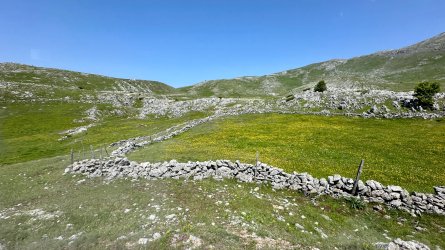
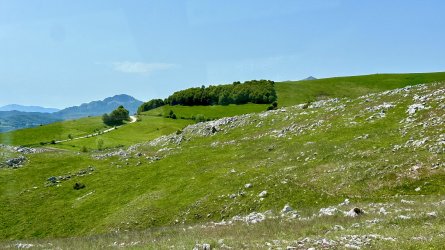
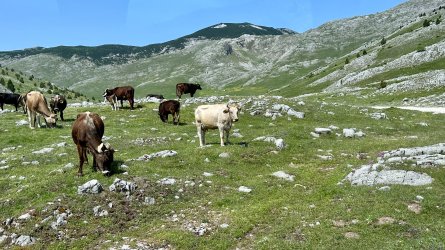
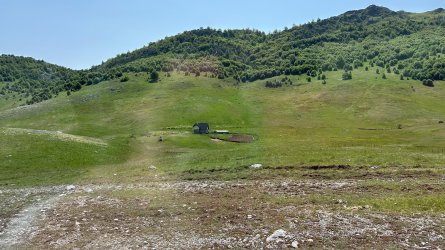
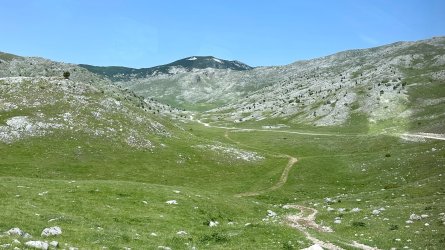
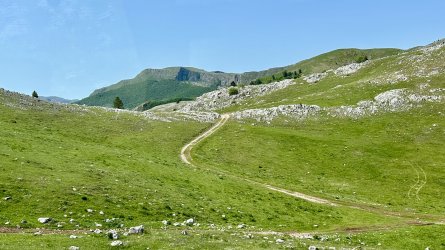
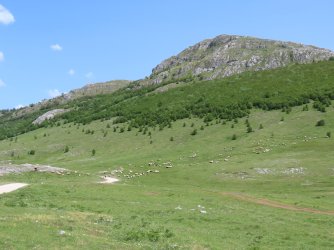
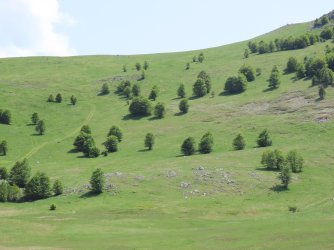


Sheep and cattle are run out here, and ancient stone-walled pens dotted the countryside. By this time we were quite high. The village we are heading for gets completely cut off by snow in winter; the villagers take their livestock down these hills to lower pastures.








- Joined
- Nov 12, 2012
- Posts
- 31,134
- Qantas
- Platinum
- Virgin
- Platinum
- Star Alliance
- Gold
Lukomir was 'discovered' in 2018 when it was on the cover of National Geographic.

 www.nationalgeographic.com
www.nationalgeographic.com
Although we didn't interact with the old locals depicted there (most have moved away), the pictures give a better idea of the atmosphere than my pics.
The houses consistof limestone blocks, with only very small windows, to keep out the cold. Roofs of flattened tin. There are some modern additions, as several of the places are now 'restaurants' for day trippers, like us.
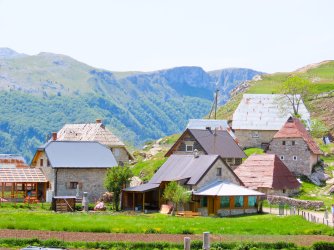
The high point is where most of the pics in the next post were taken from.
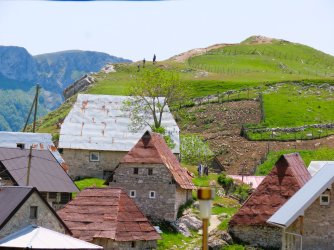
Fairly typical scene of us heading off for our exploratory walk.
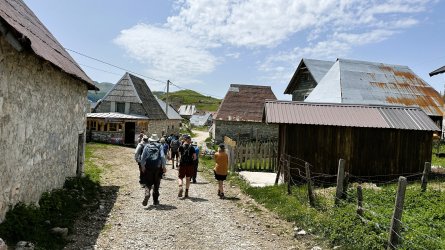
First stop, was past the current Islamic graveyard
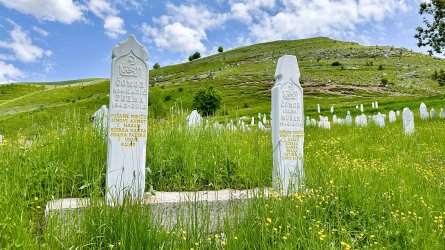
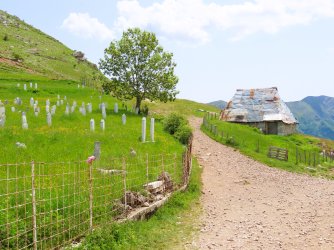
... to a group of stećci overlooking the canyon. These are medieval tombstones, of which there are about 60,000 in Bosnia and Herzegovina and about 10,000 in neighbouring countries. Wikipedia:
Appearing in the mid 12th century, with the first phase in the 13th century, the custom of cutting and using stećci tombstones reached its peak in the 14th and 15th century, before being discontinued in the very early 16th century during the Ottoman conquest of Bosnia and Herzegovina. They were a common tradition amongst Bosnian, Catholic and Orthodox Church followers alike, and were used by both Slavic and the Vlach populations.
These aren't in good condition - we'll see better ones later in the trip.
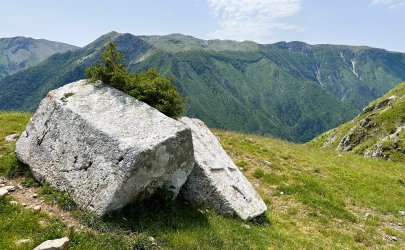
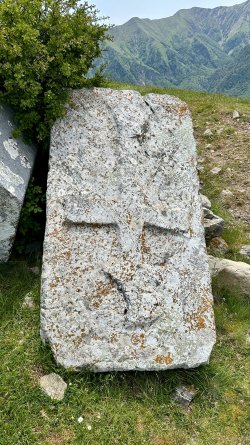

Pictures of an underrated European village: Lukomir, Bosnia and Herzegovina
Lukomir is home to 17 families and medieval traditions.
Although we didn't interact with the old locals depicted there (most have moved away), the pictures give a better idea of the atmosphere than my pics.
The houses consistof limestone blocks, with only very small windows, to keep out the cold. Roofs of flattened tin. There are some modern additions, as several of the places are now 'restaurants' for day trippers, like us.

The high point is where most of the pics in the next post were taken from.

Fairly typical scene of us heading off for our exploratory walk.

First stop, was past the current Islamic graveyard


... to a group of stećci overlooking the canyon. These are medieval tombstones, of which there are about 60,000 in Bosnia and Herzegovina and about 10,000 in neighbouring countries. Wikipedia:
Appearing in the mid 12th century, with the first phase in the 13th century, the custom of cutting and using stećci tombstones reached its peak in the 14th and 15th century, before being discontinued in the very early 16th century during the Ottoman conquest of Bosnia and Herzegovina. They were a common tradition amongst Bosnian, Catholic and Orthodox Church followers alike, and were used by both Slavic and the Vlach populations.
These aren't in good condition - we'll see better ones later in the trip.


- Joined
- Nov 12, 2012
- Posts
- 31,134
- Qantas
- Platinum
- Virgin
- Platinum
- Star Alliance
- Gold
The notable thing about Lukomir is its location - its at about 1,500m on Bjelašnica mountain, overlooking the Raticnika canyon.

 en.wikipedia.org
en.wikipedia.org
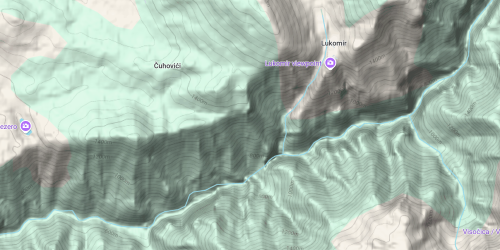
Loo with a view
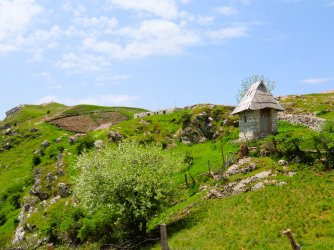
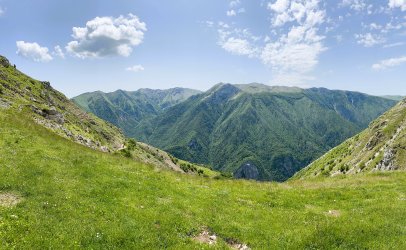
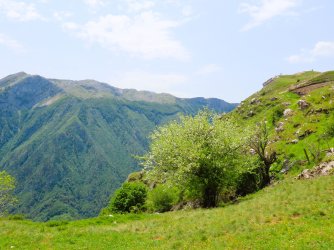
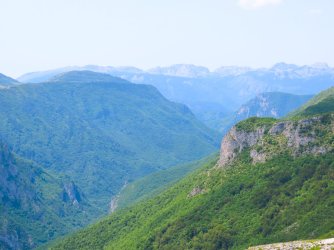

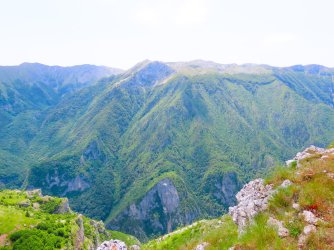

Rakitnica (Neretva) - Wikipedia

Loo with a view






- Joined
- Nov 12, 2012
- Posts
- 31,134
- Qantas
- Platinum
- Virgin
- Platinum
- Star Alliance
- Gold
Then it was lunchtime  . Again, advantage of organised tour is that a great spread is organised for us.
. Again, advantage of organised tour is that a great spread is organised for us.
Our host; and of course its bureks. Meat, spinach+fetta, vegetable and cheese.
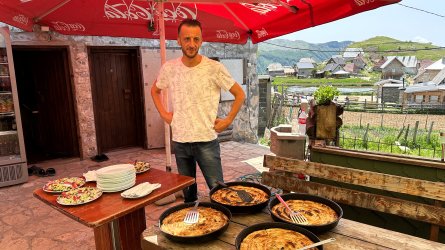
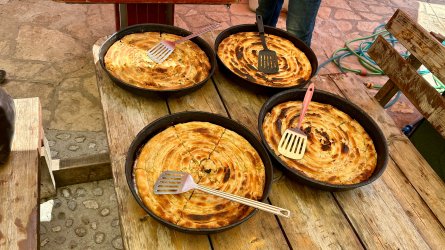
I had a slice of meat and one of spinach+fetta and both were delicious - totally different f4om in Sarajevo.
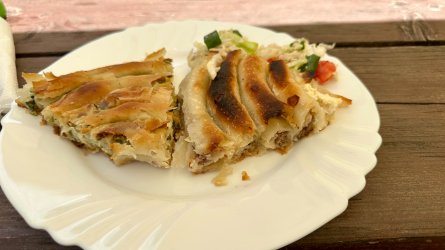
and a cold local pivo (beer), of course
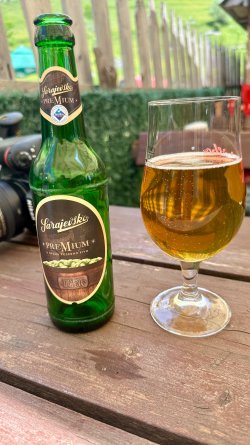
Followed by Bosnian coffee. I haven't mentioned before, that coffee is huge here. To you and me its Turkish coffee, but there is a difference in its preparation. Every stop we were encouraged to have a coffee. The lattes and cappuccinos around here are pretty dire.
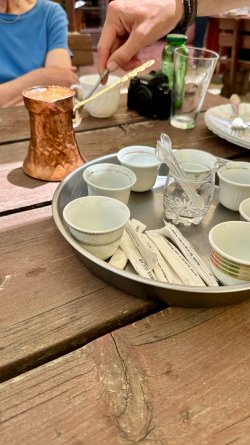
The creama is an important step. Produced in the boiling, its scooped out of the 'pot' and placed in the bottom of each cup, really enhancing the flavour.
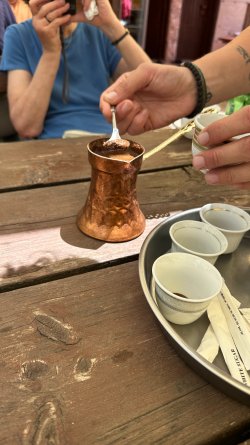
Thick!
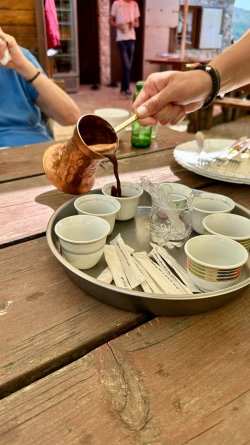
I'm not a fan of strong coffee, but this went down very well
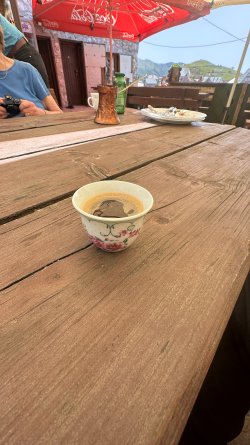
... especially accompanied by a tulumba.
It is fried batter soaked in syrup, similar to jalebis or churros. It is made from unleavened choux pastry dough (usually about 3 cm long) piped with a pastry bag using an open star or similar tip. It is first deep-fried to golden colour and then sugar-sweet syrup is poured over it when still hot. It is eaten cold.

No, I only had ONE - it would have been impolite not to.
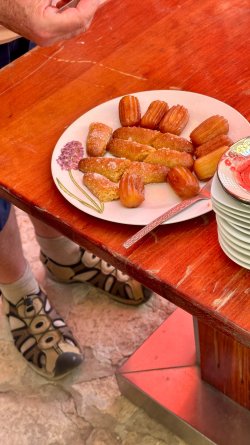
Here is the mamma, very appreciative of out appreciation and on the right, our tour guide.
I haven't talked about our guide. Fatima, 28, outrageously fit, with excellent English and always on the go, doing or organising things. She's a non-practicing Muslim. One of the best tour guides I've experienced; she's going to do well at the end of the trip (as is our driver, Samir).
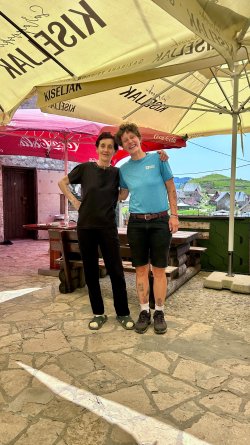
Our host; and of course its bureks. Meat, spinach+fetta, vegetable and cheese.


I had a slice of meat and one of spinach+fetta and both were delicious - totally different f4om in Sarajevo.

and a cold local pivo (beer), of course

Followed by Bosnian coffee. I haven't mentioned before, that coffee is huge here. To you and me its Turkish coffee, but there is a difference in its preparation. Every stop we were encouraged to have a coffee. The lattes and cappuccinos around here are pretty dire.

The creama is an important step. Produced in the boiling, its scooped out of the 'pot' and placed in the bottom of each cup, really enhancing the flavour.

Thick!

I'm not a fan of strong coffee, but this went down very well

... especially accompanied by a tulumba.
It is fried batter soaked in syrup, similar to jalebis or churros. It is made from unleavened choux pastry dough (usually about 3 cm long) piped with a pastry bag using an open star or similar tip. It is first deep-fried to golden colour and then sugar-sweet syrup is poured over it when still hot. It is eaten cold.
No, I only had ONE - it would have been impolite not to.

Here is the mamma, very appreciative of out appreciation and on the right, our tour guide.
I haven't talked about our guide. Fatima, 28, outrageously fit, with excellent English and always on the go, doing or organising things. She's a non-practicing Muslim. One of the best tour guides I've experienced; she's going to do well at the end of the trip (as is our driver, Samir).

- Joined
- Nov 12, 2012
- Posts
- 31,134
- Qantas
- Platinum
- Virgin
- Platinum
- Star Alliance
- Gold
Pause for a bit about religion in Bosnia. What a mess.
'Traditional' Bosnians are Muslim, but its a very loose form of it. Here in Mostar, there is no pork served, but no problem with alcohol (and I mean by the locals). Last night was 'prom' night and the very revealing outfits being worn for pics on the bridge would put any Oscars red carpet in the shade. You do see hijabs but any face coverings would be worn by tourists, we were told.
You do see hijabs but any face coverings would be worn by tourists, we were told.
Then there are the Bosnian Serbs. They are Orthodox Christian and are mainly in the north-east and east. It was the Bosnian Serbs who initiated the 1990s war (and conducted the genocide at Srebrenica), looking to put Bosnia and Herzegovina back into the Kingdom of Serbia. Defeated in that, they declared the Bosnian Serb areas the Republika Srpska.
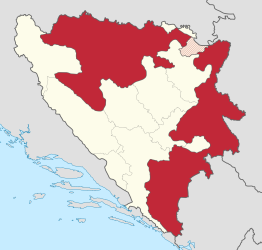
You see these signs all over where you cross from 'regular' Bosnia and Herzegovina into the red bits.
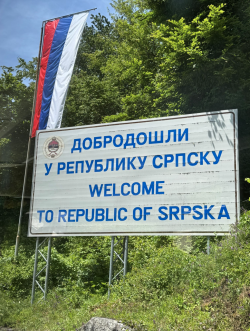
The Bosnian Serb President, one of the rotating three Presidents, is currently on the run, hiding somewhere in Serbia.
Then the Bosnian Croats. They are Catholic (but not of the Vatican kind) and are mainly in the west, along the border of Croatia. They initially supported the Bosnians in the war, but half way thought "hey, we'll have some of that" and changed sides, and attacked the Bosnians in the west.
Mostar was bombed by the Croats and the famous bridge destroyed.
'Traditional' Bosnians are Muslim, but its a very loose form of it. Here in Mostar, there is no pork served, but no problem with alcohol (and I mean by the locals). Last night was 'prom' night and the very revealing outfits being worn for pics on the bridge would put any Oscars red carpet in the shade.
Then there are the Bosnian Serbs. They are Orthodox Christian and are mainly in the north-east and east. It was the Bosnian Serbs who initiated the 1990s war (and conducted the genocide at Srebrenica), looking to put Bosnia and Herzegovina back into the Kingdom of Serbia. Defeated in that, they declared the Bosnian Serb areas the Republika Srpska.

You see these signs all over where you cross from 'regular' Bosnia and Herzegovina into the red bits.

The Bosnian Serb President, one of the rotating three Presidents, is currently on the run, hiding somewhere in Serbia.
Then the Bosnian Croats. They are Catholic (but not of the Vatican kind) and are mainly in the west, along the border of Croatia. They initially supported the Bosnians in the war, but half way thought "hey, we'll have some of that" and changed sides, and attacked the Bosnians in the west.
Mostar was bombed by the Croats and the famous bridge destroyed.
Become an AFF member!
Join Australian Frequent Flyer (AFF) for free and unlock insider tips, exclusive deals, and global meetups with 65,000+ frequent flyers.AFF members can also access our Frequent Flyer Training courses, and upgrade to Fast-track your way to expert traveller status and unlock even more exclusive discounts!

AFF forum abbreviations
Wondering about Y, J or any of the other abbreviations used on our forum?Check out our guide to common AFF acronyms & abbreviations.
Currently Active Users
Total: 523 (members: 7, guests: 516)







